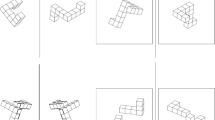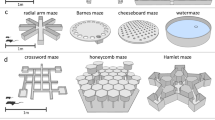Abstract
Recent water maze experiments suggest that rats performing place navigation primarily use the geometric information provided by a set of landmarks, and neglect the featural information provided by the identities of the landmarks. Here, I develop a model that explains how an animal may perform place navigation by relying only on geometric information. The core of the model is the representation of places as panoramas defined by circular bar-codes embodying the relative bearings and apparent sizes of the landmarks, irrespective of their identities. There are two stages in the model. During the first stage, the animal freely explores its environment in order to acquire spatial information at the local level. During the second stage, the animal uses the information previously memorized to perform place navigation towards the goal it intends to reach. The possible role of two brain areas in place navigation is discussed within this framework. Beyond their primary role in landmark-based representations of places, hippocampal place cells may be involved in computing the current distances to the landmarks. Beyond their primary role in landmark-based representations of headings, post-subicular head-direction cells may be involved in computing the “compass bearings” of the landmarks.
Similar content being viewed by others
Author information
Authors and Affiliations
Additional information
Received: 17 January 1998 / Accepted after revision: 19 April 1998
Rights and permissions
About this article
Cite this article
Benhamou, S. Place navigation in mammals: a configuration-based model. Anim Cogn 1, 55–63 (1998). https://doi.org/10.1007/s100710050007
Issue Date:
DOI: https://doi.org/10.1007/s100710050007




